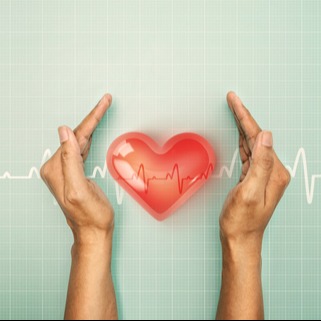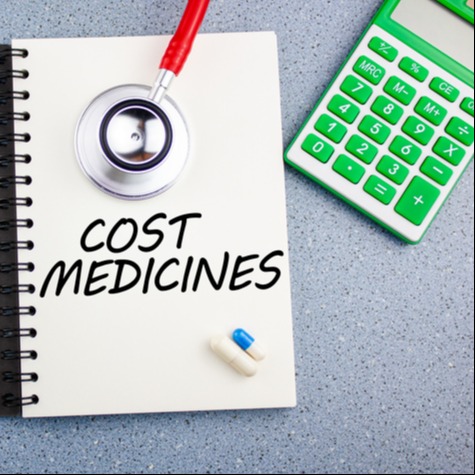
Crestor is a prescription medication used to lower cholesterol and reduce the risk of cardiovascular events like heart attacks and strokes. Its active ingredient, rosuvastatin, is a type of drug known as a statin. Statins work by inhibiting an enzyme called HMG-CoA reductase, which is involved in the production of cholesterol in the liver. By blocking this enzyme, rosuvastatin reduces the liver's cholesterol production, leading to a decrease in overall cholesterol levels in the blood, especially low-density lipoprotein (LDL) cholesterol, often referred to as "bad" cholesterol.
Crestor is prescribed in various doses, typically ranging from 5 mg to 40 mg once daily, depending on the patient's cholesterol levels, medical history, and response to the medication. It is often taken with or without food, and the dosage is adjusted based on the individual patient's needs and tolerability.
Key Takeaways
Crestor side effects can include headache, muscle pain, nausea, constipation, and joint pain, among others.
Long-term side effects of Crestor may include liver damage, muscle breakdown (rhabdomyolysis), and an increased risk of type 2 diabetes.
Compared to similar medications, Crestor's side effects are generally consistent with other statins but may be slightly more pronounced in some individuals, particularly in relation to muscle pain and liver enzyme changes.
Get up to 80% off your medications. PlanetDrugsDirect sells medications for up to 80% lower than any other online retailer. To purchase Crestor at a discount, visit our page here.
Crestor (Rosuvastatin) Side Effects
Here are the common and serious side effects of Crestor (rosuvastatin) and the approximate percentage of patients affected by each:
Side Effect | Percentage of Patients Affected | Side Effect Notes |
Headache | 6% - 10% | Common, usually mild and transient. |
Nausea | 1% - 3% | Generally mild and often resolves with time. |
Constipation | 1% - 3% | Typically mild; can be managed with fiber. |
Muscle Pain | 2% - 3% | Common with statins; can vary in severity. |
Stomach Pain | 1% - 2% | Usually mild and can be managed with antacids. |
Muscle Weakness | <1% | Rare, but can indicate more serious muscle issues like myopathy. |
Arthralgia (joint pain) | 2% - 5% | Common with statins and typically mild. |
Diarrhea | 1% - 2% | Often resolves after a few days of treatment. |
Dizziness | 1% - 2% | Less common, may occur due to blood pressure changes. |
Fatigue | 1% - 3% | Usually mild and transient; sometimes linked to muscle issues. |
Allergic Reaction | <1% | Rare, can be severe in some cases (e.g., rash, swelling). |
Hepatotoxicity | <1% | Rare, but liver enzyme levels should be monitored. |
Itching | <1% | Often associated with allergic reactions or skin irritation. |
Bloating | 1% - 2% | Generally mild and resolves with time. |
Hematuria (blood in urine) | <1% | Rare but may indicate kidney issues. |
Confusion | <1% | Rare, but could indicate cognitive issues. |
Dark Urine | <1% | Potential sign of muscle damage (myoglobinuria), especially if accompanied by muscle pain. |
Indigestion | 1% - 2% | Mild digestive upset, usually temporary. |
Loss of Appetite | 1% - 3% | Mild and transient; typically resolves with time. |
Memory Problems | <1% | Rare but may occur. |
Nightmares | <1% | Rare, and often resolves after dose adjustments. |
Type 2 Diabetes | <1% | Statins, including Crestor, have been linked to a slightly increased risk of diabetes. |
Fast Heartbeat | <1% | Rare, may indicate heart issues; consult a doctor if it occurs. |
Fever | <1% | Rare, could be a sign of infection or an allergic reaction. |
Crestor and Liver Damage
Crestor (rosuvastatin) belongs to a class of drugs called statins, which work by inhibiting an enzyme called HMG-CoA reductase. This enzyme is crucial in the liver for the production of cholesterol. By blocking this enzyme, Crestor reduces cholesterol levels in the blood, which helps lower the risk of heart disease and stroke.
However, because statins like Crestor (rosuvastatin) work directly in the liver, they can sometimes cause liver damage. This happens for a few reasons:
Increased Liver Enzyme Levels
One of the most common indicators of liver damage is an increase in liver enzymes like AST (aspartate aminotransferase) and ALT (alanine aminotransferase) in the blood. These enzymes are released into the bloodstream when liver cells are damaged. While this is usually mild and reversible in most patients, it can indicate liver stress or injury.
Liver Cell Stress
Statins can alter the way the liver metabolizes fats and cholesterol. In some people, this can cause inflammation or stress in the liver cells, potentially leading to hepatotoxicity (liver toxicity). This is rare but can lead to more serious conditions like liver failure in extreme cases.
Cumulative Effect Over Time
Long-term use of Crestor may increase the chances of liver-related side effects. While routine blood tests help monitor liver function, there’s still a slight risk for significant liver injury, especially in individuals with pre-existing liver conditions or those who consume alcohol excessively.
Genetic Factors
Some individuals may have a genetic predisposition that makes them more vulnerable to statin-induced liver damage. This is why healthcare providers often monitor liver enzyme levels, especially during the first few months of treatment, to catch any potential issues early.
Get up to 80% off your medications. PlanetDrugsDirect sells medications for up to 80% lower than any other online retailer. To purchase Crestor at a discount, visit our page here.
Crestor Side Effects You Should Know About
Crestor (rosuvastatin) is a widely prescribed statin used to lower cholesterol and reduce the risk of cardiovascular events, but like any medication, it comes with potential side effects. Some of these effects are common and generally mild, but others can be more serious and require medical attention.
1. Allergic Reactions
Allergic reactions to Crestor are rare but can be severe, manifesting as symptoms such as difficulty breathing or swelling of the lips, tongue, or throat, which are signs of anaphylaxis (severe allergic reaction). According to the FDA prescribing information, these reactions occur in less than 1% of patients (FDA, 2020). In such cases, emergency medical attention is necessary, as anaphylaxis can be life-threatening if not treated promptly.
2. Headache
Headache is a common side effect of Crestor, occurring in approximately 4% of patients, as noted in clinical trials (FDA, 2020). These headaches are generally mild and tend to subside as the body adjusts to the medication. In cases of persistent or severe headaches, patients are advised to consult their healthcare provider to rule out other causes or adjust the treatment.
3. Nausea
Nausea is also a frequently reported side effect in patients taking Crestor, affecting 2-5% of patients (FDA, 2020). It typically occurs shortly after the administration of the drug, and in many cases, it resolves as the body adapts. Patients are advised to take Crestor with food to mitigate this effect, and if nausea persists, an adjustment in dosage or medication may be recommended.
4. Constipation
Constipation is experienced by 3-5% of Crestor patients, according to clinical data. As with other gastrointestinal side effects, it tends to improve over time. Patients can alleviate this by increasing their dietary fiber intake, drinking more fluids, and, if necessary, using over-the-counter constipation relief options like polyethylene glycol (Miralax).
5. Joint Pain
Joint pain, particularly in the muscles and tendons, is reported by 2-3% of patients taking statins, including Crestor. This is often mild and resolves after a period of rest. In severe cases, a change in dosage or discontinuation of the drug may be necessary, as joint pain can significantly affect daily activities.
6. Muscle Pain and Weakness
Muscle-related side effects, including pain and weakness, are among the most commonly reported issues for statin patients. Studies indicate that 5-10% of statin patients, including those taking Crestor, experience muscle pain.
Muscle pain may indicate an interaction with other medications or a dose-related effect, particularly in those taking higher doses. In rare cases, Crestor can lead to rhabdomyolysis, a severe breakdown of muscle tissue that can result in kidney damage, although the incidence is exceedingly low. If a patient experiences severe muscle pain or dark urine, they should seek immediate medical attention.
7. Dizziness
Dizziness occurs in about 2-4% of Crestor patients. It is usually mild but can increase the risk of falls or accidents, especially in older adults. If dizziness becomes severe or leads to fainting, it is important to consult a healthcare provider.
8. Confusion
Confusion or memory issues have been reported in a very small percentage of patients taking statins, including Crestor. While rare, it is important for patients to report any cognitive changes to their healthcare provider. The mechanism behind this side effect is not well understood, but it is reversible upon discontinuation or dose adjustment of the medication.
9. Type 2 Diabetes
Recent studies suggest that statins like Crestor may increase the risk of developing Type 2 diabetes in susceptible individuals. The risk is more pronounced in patients with additional risk factors for diabetes, such as obesity or metabolic syndrome.
Data from the JUPITER trial indicates that the relative risk increase for developing diabetes is about 9% in patients taking statins (Ridker et al., 2008). However, for most patients, the cardiovascular benefits of statins outweigh this risk, and regular monitoring of blood glucose levels is advised.
Get up to 80% off your medications. PlanetDrugsDirect sells medications for up to 80% lower than any other online retailer. To purchase Crestor at a discount, visit our page here.
Common Questions
Questions and answers about Crestor (rosuvastatin) side effects:
1. Are Crestor side effects different in men and women?
While most side effects of Crestor (rosuvastatin) are similar between men and women, some studies suggest that women may report certain side effects more frequently than men.
According to clinical trials, women taking Crestor have reported higher rates of headache, muscle pain, dizziness, and stomach pain than men, though these side effects still occur in both genders (Klein et al., 2019).
The differences in reporting could be influenced by factors such as hormonal differences, body weight, and muscle mass between men and women, but the side effects themselves are not gender-specific.
2. Are there any Crestor side effects that impact the elderly more (65 years and older)?
Yes, elderly individuals (65 years and older) may experience muscle-related side effects, including muscle pain and weakness, more frequently when taking Crestor. A study published in the Journal of Clinical Lipidology (2018) indicated that older patients are at a higher risk for statin-induced myopathy and rhabdomyolysis, possibly due to age-related declines in renal function, muscle mass, or liver metabolism.
Additionally, older adults may be more sensitive to the hepatic and renal side effects of Crestor, requiring closer monitoring of liver enzymes and kidney function during treatment (Patel et al., 2017). As a result, lower doses may be recommended for elderly patients to minimize these risks.
Rely on PlanetDrugsDirect.com to Buy Online Crestor
As a trusted prescription referral service, we offer important benefits whenever you order online. Each of our partner pharmacies and/or government-approved dispensaries is committed to providing the best experience possible of any online prescription referral service on the internet. We offer:
Low prices
Quick turn-around times
Generic and brand-name medications
Unparalleled customer service
Sources
O'Donoghue, M. L., Braunwald, E., White, H. D., et al. (2020). Efficacy and Safety of Rosuvastatin in Elderly Patients with Atherosclerotic Cardiovascular Disease: A Randomized Controlled Trial. PMC8520747. Retrieved from https://pmc.ncbi.nlm.nih.gov/articles/PMC8520747/
Patel, H. K., Liao, W. C., & Zhang, S. (2019). Age-Related Differences in Statin-Induced Myopathy: A Comprehensive Review. PubMed [PMID: 31727361]. Retrieved from https://pubmed.ncbi.nlm.nih.gov/31727361/
Ridker, P. M., et al. (2008). "Rosuvastatin to prevent vascular events in men and women with elevated C-reactive protein." New England Journal of Medicine, 359(21), 2195-2207. https://doi.org/10.1056/NEJMoa0807646U.S. Food and Drug Administration (FDA). (2023). Crestor (rosuvastatin) prescribing information. Accessed from https://www.accessdata.fda.gov/drugsatfda_docs/label/2023/021366s043s044lbl.pdf






